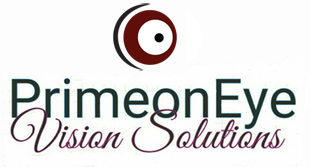Age Related Macular Degeneration (AMD)
The age-related macular degeneration is a disease of the macula, a small, but important for sharp vision, part of the retina, where cells degenerate and are destroyed. The macular degeneration (AMD) occurs as two separate entities, the dry AMD and wet AMD, depending on whether fluid is leaking inside the macula. The distinction is important because the wet AMD requires special treatment with injections with or without laser and or surgery.
The dry AMD has as characteristic the presence of drusen which are formed under the retina and are piles of useless substances that are come from the cell’s metabolism of the eye. As these piles are growing, normal cells lose the contact with nutritional resources and become atrophic, leading to a drop in vision. So, simplistically, is the process of failure in dry AMD which has usually slow evolution leading to a decline in vision but not in complete blindness. In the diagnosis and monitoring of dry AMD is necessary the OCT examination and in dubious cases needs to be done angiography and auto fluorescence.
“We are proud to operate the most modern swept source OCT that offers details of the macula that are not detectable with former OCT models and additionally offers the new swept source OCT angiography, avoiding the need in many cases of the standard dye angiography”
Therapy, unfortunately, has not been found yet. Main symptoms are blurred vision, disturbance in the contrast of gray, fading of color, distortion of objects. In a proportion the dry AMD progresses to wet AMD.

The wet AMD is called wet because the liquid is gathered inside and under the retina causing swelling in macula and disturbing the connections between cells, resulting in blurred vision. This fluid comes from pathological vessels that are formed in the body in an attempt to rescue the macula’s cells. This effort, unfortunately, is the major problem in wet AMD because these vessels don’t have a good wall to keep the blood and its components inside. So fluid, fat or blood are leaking into the surrounding area affecting the function of the photoreceptors.
In previous years there was no cure for these vessels. Today we are able to fight these vessels with injections and laser giving a significant advantage to patients. By improving eyesight and the stabilization of vision, an added significant benefit to patients is given. The disadvantage of the injection is that may need to be done very often (every month) for a long time (even years).
Injections can be combined with special laser, with other medicines, even with specific surgeries. This of course assumes that the doctor has the expertise in various therapeutic methods. The close cooperation of the patient and the physician is the cornerstone for treatment of macular. This cooperation should be based on active participation of the patient’s after the patient understands the purpose and the prospect of treatment.
Consult us for more advice and help.
